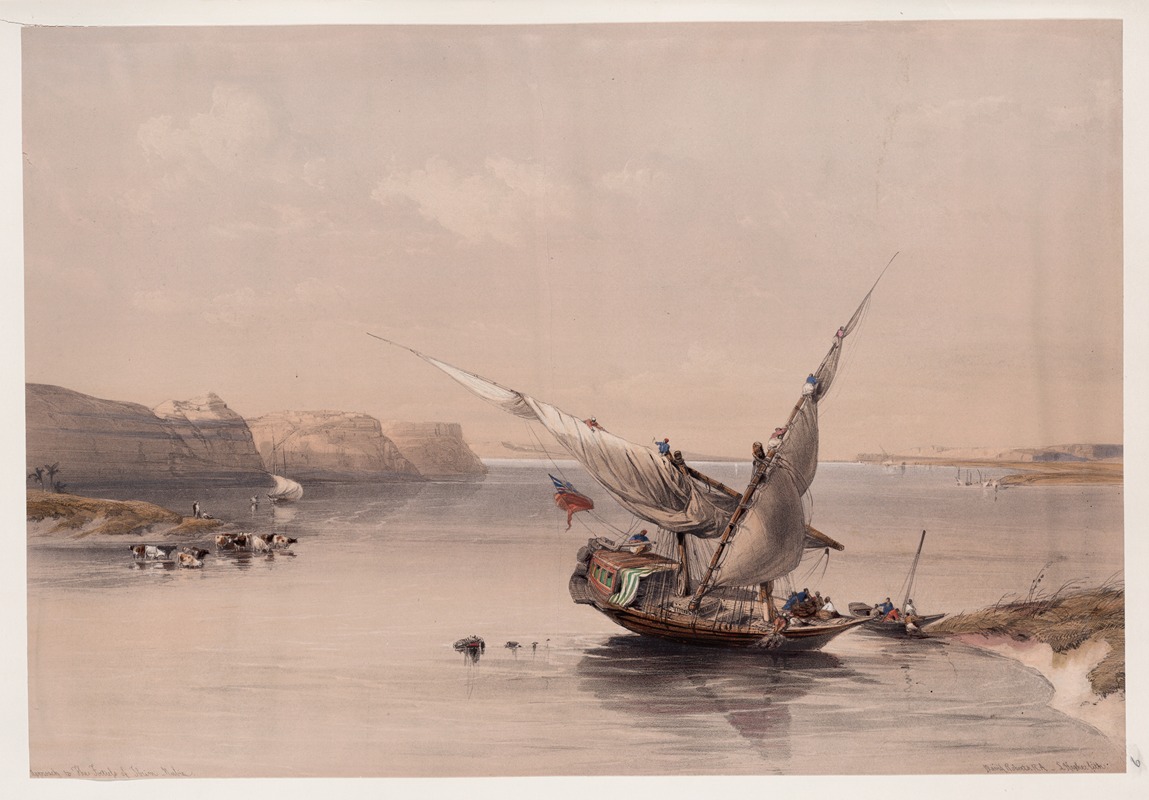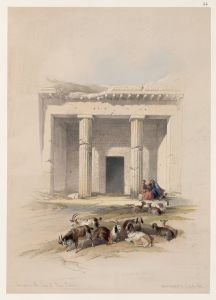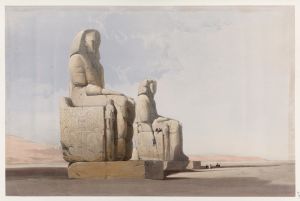
Approach to the Fortress of Ibrim.
A hand-painted replica of David Roberts’s masterpiece Approach to the Fortress of Ibrim., meticulously crafted by professional artists to capture the true essence of the original. Each piece is created with museum-quality canvas and rare mineral pigments, carefully painted by experienced artists with delicate brushstrokes and rich, layered colors to perfectly recreate the texture of the original artwork. Unlike machine-printed reproductions, this hand-painted version brings the painting to life, infused with the artist’s emotions and skill in every stroke. Whether for personal collection or home decoration, it instantly elevates the artistic atmosphere of any space.
David Roberts' painting Approach to the Fortress of Ibrim is a 19th-century artwork that depicts the historic site of Ibrim, located in Nubia, along the Nile River in present-day southern Egypt. This artwork is part of Roberts' extensive series of lithographs and paintings that document his travels through the Middle East and North Africa during the 1830s. Roberts, a Scottish painter, is renowned for his detailed and romanticized depictions of ancient and contemporary scenes from the region, which contributed significantly to Western perceptions of the area during the 19th century.
The Fortress of Ibrim, the subject of this painting, was a strategically significant site in Nubia. It is the only major archaeological site in Lower Nubia that remains above water following the construction of the Aswan High Dam and the subsequent creation of Lake Nasser in the 20th century. Historically, the fortress served as a military and religious center, with its origins dating back to at least the Pharaonic period. Over the centuries, it was occupied by various civilizations, including the Egyptians, Romans, and later the Ottomans. By the time Roberts visited the site, it was already in a state of partial ruin, but its imposing position on a rocky outcrop overlooking the Nile made it a striking subject for his work.
Roberts visited Ibrim during his journey along the Nile in 1838-1839. This expedition was part of a larger tour of the Middle East, during which he created numerous sketches and studies that would later be transformed into finished works. These pieces were published as lithographs in his monumental series The Holy Land, Syria, Idumea, Arabia, Egypt, and Nubia (1842-1849), which brought widespread acclaim and commercial success. The lithographs were produced by Louis Haghe, a leading lithographer of the time, and are celebrated for their technical precision and artistic quality.
In Approach to the Fortress of Ibrim, Roberts captures the dramatic landscape of the region, emphasizing the fortress's commanding position above the Nile. The painting reflects Roberts' characteristic attention to architectural and topographical details, as well as his ability to convey the grandeur and historical significance of the sites he visited. His works, including this one, played a key role in popularizing the study of Egyptology and the broader appreciation of Middle Eastern and North African cultures in Europe during the 19th century.
Roberts' artistic legacy endures, and his depictions of sites like the Fortress of Ibrim remain valuable records of these locations as they appeared in the 19th century.










![Temple of Edfou [Idfû], ancient Appolinopolis, Upper Egypt.](/imgs/217546/s/david-roberts-temple-of-edfou-idfu-ancient-appolinopolis-upper-egypt-2a77d2d6.jpg)

![Tombs of the Memlooks [Mamelukes], Cairo](/imgs/217569/s/david-roberts-tombs-of-the-memlooks-mamelukes-cairo-a3263294.jpg)





